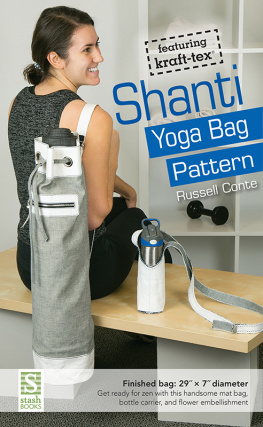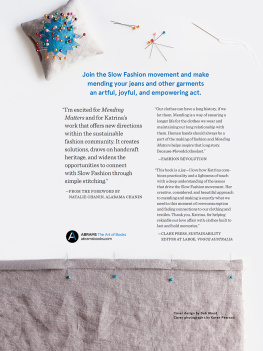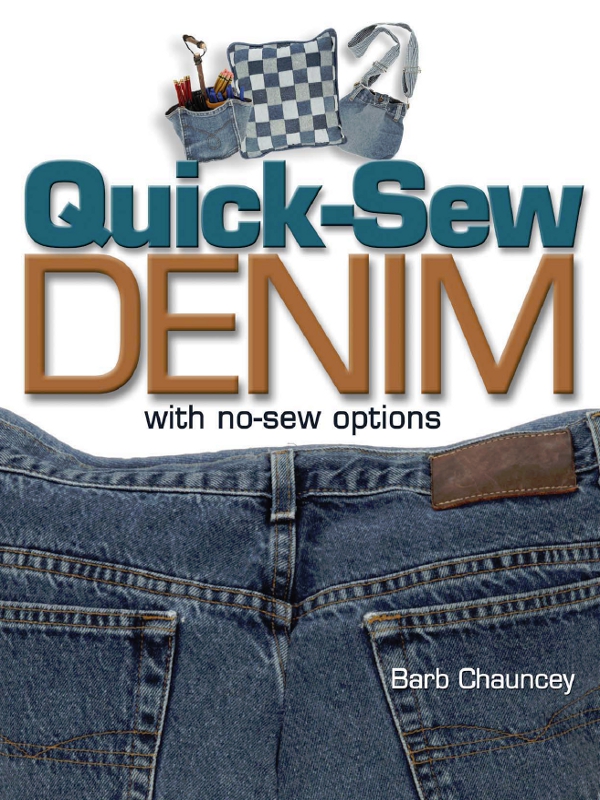
Quick-Sew
DENIM
with no-sew options
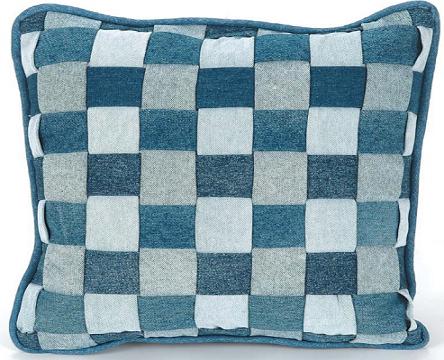
Barb Chauncey
2003 by Barbara Chauncey
All rights reserved.
No portion of this publication may be reproduced or transmitted in any form or by any means, electronic or mechanical, including photocopy, recording, or any information storage and retrieval system, without permission in writing from the publisher, except by a reviewer who may quote brief passages in a critical article or review to be printed in a magazine or newspaper, or electronically transmitted on radio or television.
Published by

700 East State Street Iola, WI 54990-0001
715-445-2214 888-457-2873
www.krause.com
To place an order or obtain a free catalog, please call 800-258-0929.
Library of Congress Catalog Number 2003101358
ISBN 0-87349-602-7
eISBN: 978-1-4402-2029-6
Editor: Christine Townsend
Book Designer: Jon Stein and Donna Mummery
Dedication
Dedicated to my mother, Ardath Hinman, who encouraged me to be creative even as a child.
Acknowledgments
There are many people who I wish to thank for their help in making this book possible.
I would like to thank my family for their help and encouragement, especially Stephanie.
Thank you, Jerry, for taking a few pictures. Thanks, Todd, for all those used jeans I dont have to patch now. Thanks to Julie Stephani and Christine Townsend. I appreciate everyone who gave me jeans and helped with photos. Thanks to Doris and her girls, and Maria. Thank you, Lisa, for giving me a boost to get started.
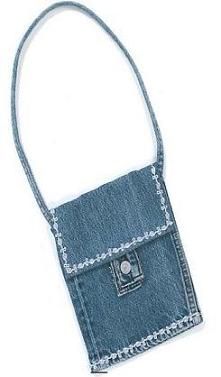
Table of Contents


The History Behind
Denim and Jeans
While there is some mysteryeven controversyabout the true origin of denim fabric, we know it was being produced in both France and England by the end of the seventeenth century. But where did it originate?
There was a town in France named Nmes where a serge fabric, serge de Nmes, was made from silk and wool. Fabrics often were named for their geographic place of origin, and since the word denim sounds like it could be a derivation of the French town de Nmes, it seems logical to assume that denim came from this French town. What we call denim today, though, isnt made from silk or wool, its made from cotton.
We also know that there was a cotton fabric called jean that was first made in Genoa, Italy. Like serge de Nmes, jean was also a twill weave. But denim, the stronger and more expensive cloth, was made from one colored thread and one white thread; jean, however, was made from two threads of the same color. To complicate matters more, mills throughout Europe made jean and denim, capitalizing on the romance associated with their foreign names. Because there arent official records regarding where these mills received the fabrics they imitated, their real origins remain murky.
In the eighteenth century, American mills began to produce both denim and jean. The first printed reference to denim appeared well over 200 years ago, in a Rhode Island newspaper dated 1769. Denim and jean fabrics were much in demand in America. But the denim cloth was comfortable, durable, and easily laundered. It was used mainly as material to make trousers for those who performed manual labor, from coal miners to ranchers. Jean, although it was strong, was considered more formal, and so was used to make more tailored trousers.
In the early days of America, jeans were referred to as waist overalls. When Levi Strauss and Jacob Davis invented their copper-riveted version, they made them from blue and brown denim; hence, denim overalls. It was not until after World War II that they were actually referred to as jeansand it seems as though the name was just what Americans chose to call them. It was around 1970 that jeans were widely accepted for all occupationsnot just the working or labor classes. We love the stuff!
What are you wearing? Im in jeans.
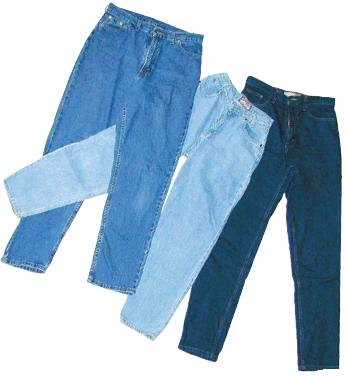

Selecting Denim
and Techniques
for Denim Crafting
Choose the Right Pair of Jeans
Selecting the right pair of jeans to work with is an important first step in creating any project. When collecting old jeans, pay attention to whether they are light or dark, slim or wide, plain or embellished. It is often helpful to select jeans with a particular project in mind in order to get the perfect pairor pairs.
If you do not have enough old denim lying around the house, check out thrift shops or garage sales. Thrift shops sometimes sort out jeans that are too shabby to sell. You may be able to obtain these free of charge. The change of seasons usually brings a new pile of discarded jeans at garage sales. Look for jeans with unusual pockets, buttons, or loops.
At first glance, you might think a pair of jeans is useless, as many discarded jeans have faded knees or worn hems. I have found that the backside of jeans often have more uniform color and fewer stains. And, dont overlook a great waistband or perfectly useable pockets on an otherwise worn pair of jeans.
Denim comes
in many shades
of blue
some lighter,
some darker.

Select the Right Weight
Select the weight of denim to suit the project. In general, if the finished product needs to stand by itself, use heavier or stiffer denim. Gift bags are easier to make from stiffer denim. If the project has many folds or is very small, use lighter weight or softer denim. Use thinner denim for projects that require edges to be folded around mat board or notebooks.
Select the Right Color
Denim comes in many shades of blue some lighter, some darker. This contrast is especially important in woven projects, such as some of the pillows. A checkerboard effect can be achieved by alternating light and dark strips.
Utilize Unique Features
Unusual yokes or pockets can make a pillow top.
Striped bib overalls usually have many unique pockets and buttons, and the striped denim fabric adds a special look. The suspenders make great handles on purses or other bags. The suspender top and pockets from bib overalls would make an interesting pillow top. Another idea is to add darker fabric behind the suspenders for a splash of color and contrast.
Storage
Store denim pieces as flat as possible, whether hung from hangers or folded. This keeps the denim from wrinkling. Wrinkles can be difficult to press out; spray them with a little water and then press with a steam iron.
Next page


